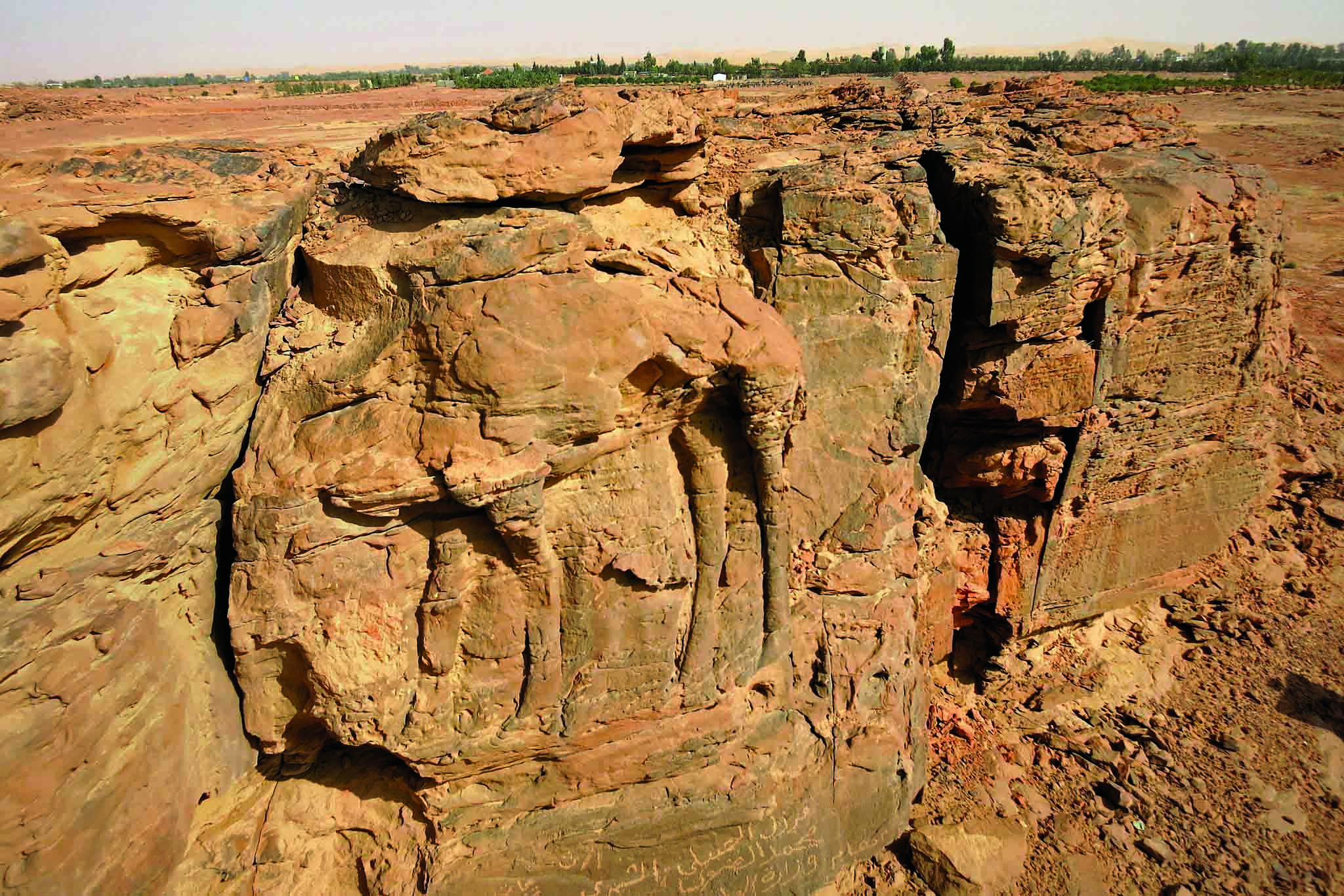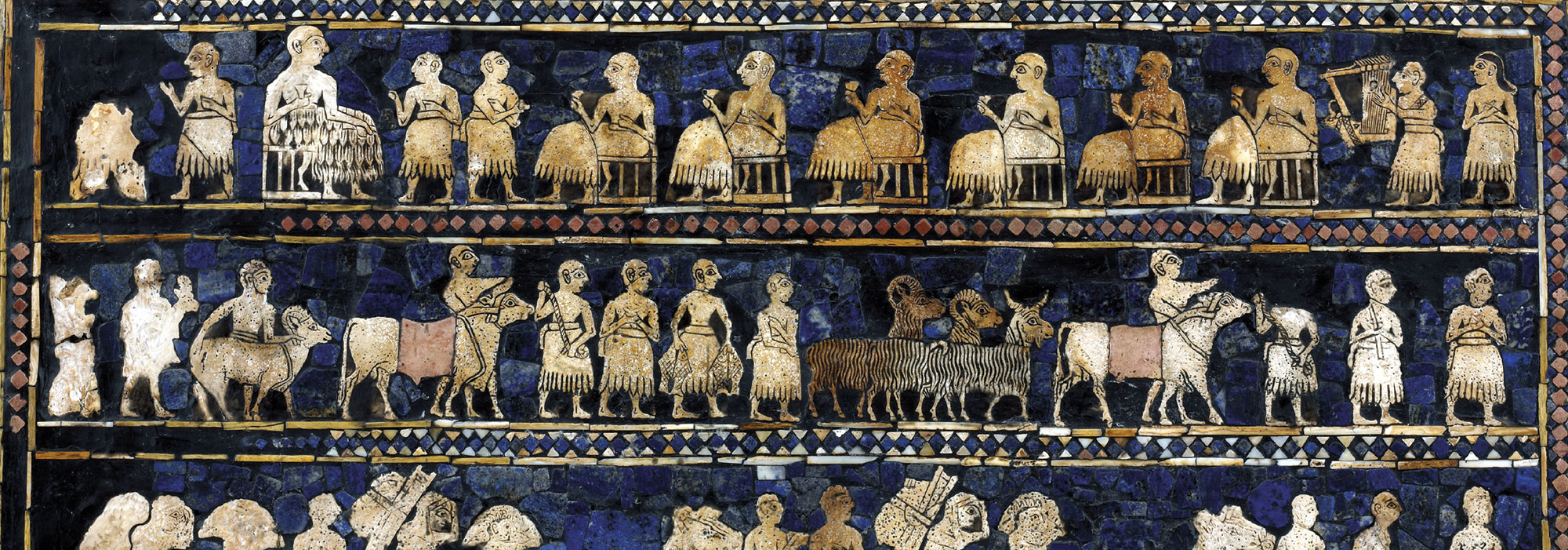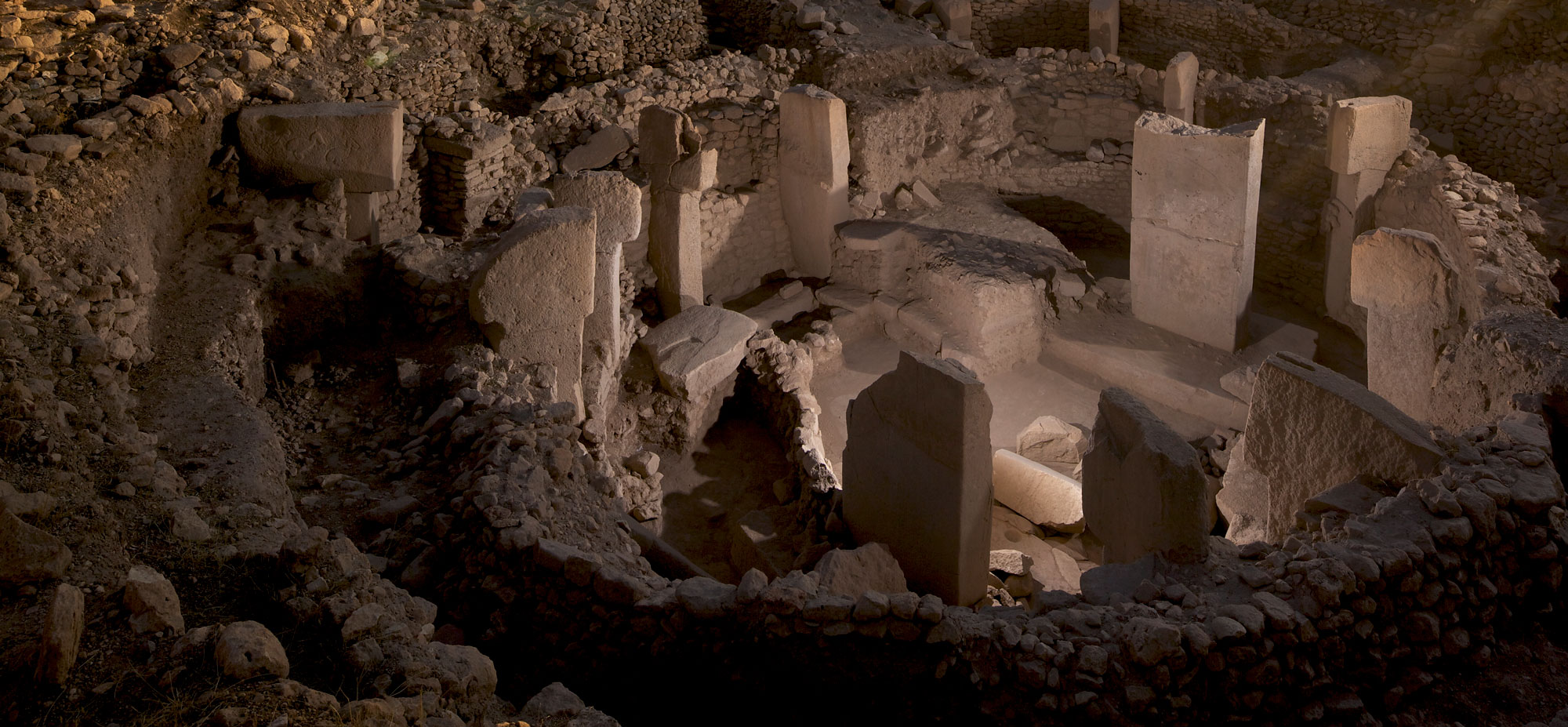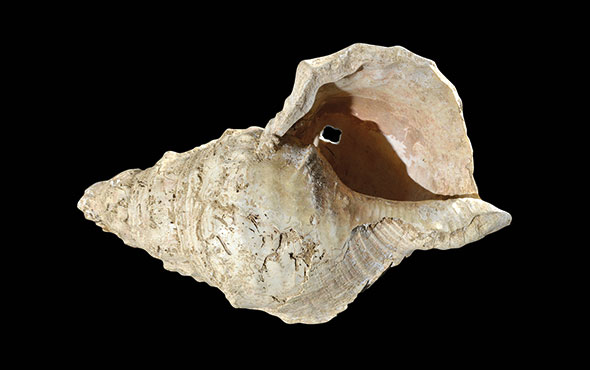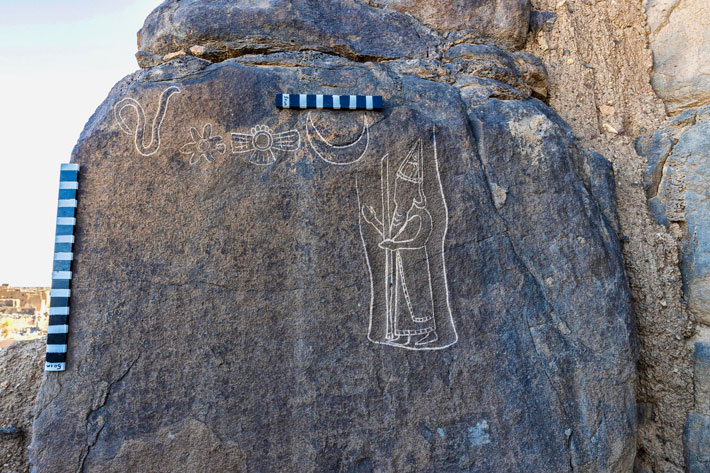
RIYADH, SAUDI ARABIA—Live Science reports that a 2,550-year-old inscription has been discovered on a piece of basalt in the Hail region of northern Saudia Arabia. Nabonidus, the last king of Babylon, is shown holding a scepter at the top of the engraving, along with a snake, a flower, and the moon. These images are thought to have been used as symbols with religious meaning. The lines of cuneiform text following the images are being translated and may offer new information about the king. Nabonidus is known to have ruled the Babylonian Empire from 555 to 539 B.C. At the beginning of his reign, he conquered an area in what is now Saudi Arabia and lived there in the city of Tayma until about 543 B.C. It is not known what happened to Nabonidus when Babylon was captured by the Persians in 539 B.C. To read about ancient monuments recently recorded during an aerial survey in northwest Saudi Arabia, go to "Around the World: Saudi Arabia."



